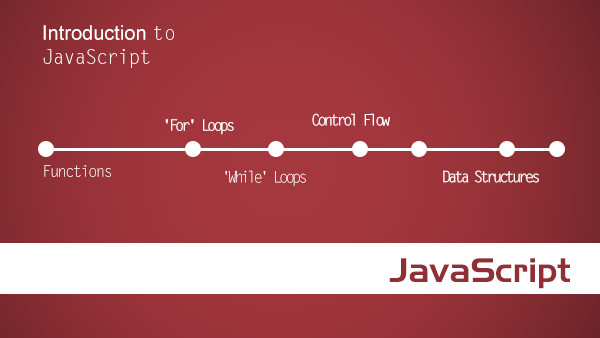第6章: 行为委托
先简单回顾一下JavaScript的
[[Prototype]]机制:JavaScript的
[[Prototype]机制,本质上就是对象之间的关联关系。[[Prototype]]机制是指对象内部中包含另一个对象的引用,当第一个对象的属性访问不到时,引擎会通过引用,到[[Prototype]]关联的对象上继续查找,后者也没有找到,就会查找它的[[Prototype]],以此类推,这一系列的对象被称为原型链。
我们也说过,与其将JavaScript术语
[[Prototype]]称为 原型继承 ,不如叫 原型委托 更为准确。而本章主要讲解就是“面向类”和“面向委托”设计模式之间的区别。
6.1 面向委托的设计
6.1.1 类理论
面向类的设计模式,通常先“抽象”父类的特征,然后用子类继承父类后进行特殊化。
举例说,用面向类的设计模式实现“汽车”和“飞机”:
定义一个通用的父类
Transport(运输工具),Transport类定义公共的特性和行为;接着定义子类
Car(汽车)和Aircraft(飞机),继承自Transport并且对自身的属性和行为进行特殊化;
class Transport { //构造函数
Transport(id,passengerNum,name);
id;
passengerNum; //乘客数
name; //品牌名字
//启动
launch(){ console.log('载重人数:'+passengerNum,'品牌名字:'+name);
};
}class Car inherits Transport{ //构造函数
Car(id,passengerNum,name,wheelNum){ super(id,passengerNum,name);
wheelNum = wheelNum;
}
wheelNum; //轮子数量
launch(){ super(); console.log('轮子数量:' + wheelNum);
};
}class Aircraft inherits Transport{ //构造函数
Aircraft(id,passengerNum,name,wingNum){ super(id,passengerNum,name);
wingNum = wingNum;
}
wingNum; //机翼数量
launch(){ super(); console.log('机翼数量:' + wingNum);
}
}6.1.2 委托理论
如果用面向委托的设计模式考虑同样的问题呢:
同样需要定义
Transport(运输工具),但它只是包含公共的功能方法;接着定义
Car(汽车)和Aircraft(飞机),存储具体的数据以及特殊方法;
class Transport {
setId : function(id){ this.id = id;
}, setPassengerNum : function(num){ this.passengerNum = num;
}, setName : function(name){ this.name = name;
},
launch(){ console.log('载重人数:'+this.passengerNum,'品牌名字:'+this.name);
},
}//Car委托TransportCar = Object.create(Transport);
Car.prepareTransport = function(id,passengerNum,name,wheelNum){ this.setId(id); this.setPassengerNum(passengerNum); this.wheelNum = wheelNum;
}
Car.prepareLaunch = function(){ this.launch(); console.log('轮子数量:' + wheelNum);
}“面向类”和“面向委托”设计模式的区别
数据存储在委托者(
Car/Aircraft)上,而不是委托对象(Transport)上;在面向类的设计模式中,父类和子类都拥有同名的方法
launch(),但在面向委托的设计模式中,我们会尽量避免在[[Prototype]]链条的不同级别中,使用相同的命名;如同
this.setId()方法,由于调用位置触发了this的隐式绑定规则,虽然setId()方法在Transport中,运行时,仍然会绑定到Car。这说明,委托行为意味着Car对象在找不到属性或者方法引用时,会把这个请求委托给另一个对象Transport。
注意:在两个或两个以上互相委托的对象之间,创建循环委托是禁止的。
6.1.3 比较思维模型
用伪代码,从理论上了解“面向类”和“面向委托”两种设计模式的区别后,我们从具体的JavaScript代码来比较两种设计模式的异同:
/**
* 交通工具
* @param {*} id
*/function Transport(id,name,passengerNum){ this.id = id; this.name = name; this.passengerNum = passengerNum;
}
Transport.prototype.launch = function(){ console.log('载重人数:'+this.passengerNum,'品牌名字:'+this.name);
}/**
* 汽车
* @param {*} id
* @param {*} name
* @param {*} passengerNum
*/function Car(id,name,passengerNum){
Transport.call(this,id,name,passengerNum);
}
Car.prototype = Object.create(Transport.prototype);
Car.prototype.run = function(){ this.launch();
}//实例化var lexus = new Car(1,'雷克萨斯',8);var bmw = new Car(2,'宝马',8);
lexus.run();
bmw.run();再用“面向委托”的设计模式,通过对象关联的代码风格来编写同样的代码:
/**
* 交通工具
*/Transport = { init : function(id,name,passengerNum){ this.id = id; this.name = name; this.passengerNum = passengerNum;
}, launch : function(){ console.log('载重人数:'+this.passengerNum,'品牌名字:'+this.name);
}
}/**
* 汽车
*/Car = Object.create(Transport);
Car.run = function(){ this.launch();
}//实例化var mazda = Object(Car);
mazda.init(1,'马自达',4);
mazda.run();var toyota = Object(Car);
toyota.init(2,'丰田',4);
toyota.run();对比发现,代码简洁很多。很多时候我们要的只是将对象关联起来,并不需要那些既复杂又令人困惑的模仿类的行为,比如构造函数、原型以及
new。
6.2 类与对象
接着我们通过真实的web前端案例来感受两种设计模式的不同,比如说我们要在页面上创建按钮控件。
/**
* Widget父类
* @param {*} width
* @param {*} height
*/function Widget(width,height){ this.width = width; this.height = height; this.$elem = null;
}
Widget.prototype.render = function($where){ if(this.$elem){ this.$elem.css({ width : this.width + 'px', height: this.height + 'px'
}).appendTo($where);
}
}/**
* Button子类
* @param {*} width
* @param {*} height
* @param {*} label
*/function Button(width,height,label){
Widget.call(this,width,height); this.label = label;
}
Button.prototype = Object.create(Widget.prototype);//重写render方法Button.prototype.render = function($where){ //super调用
Widget.prototype.render.call(this,$where); //绑定事件
this.$elem.click(this.onClick.bind(this));
}
Button.prototype.onClick = function(evt){ console.log('Button'+this.label+' clicked!');
}//调用$(document).render(function(){ var $body = $(document.body); var saveBtn = new Button(125,30,'暂存'); var submitBtn = new Button(125,30,'提交');
saveBtn.render($body);
submitBtn.render($body);
})用面向委托的代码来更简单的实现Widget/Button:
/**
* Widget父类
*/var Widget = { init: function (width, height) { this.width = width || 50; this.height = height || 50; this.$elem = null;
}, insert: function ($where) { if (this.$elem) { this.$elem.css({ width: this.width + 'px', height: this.height + 'px'
}).appendTo($where);
}
}
}/**
* Button子类
*/var Button = Object.create(Widget);
Button.setup = function(width,height,label){ this.init(width,height); this.label = label || 'Default'; this.$elem = $('<button>').text(this.label);
}
Button.build = function($where){ this.insert($where); this.$elem.click(this.onClick.bind(this));
}
Button.onClick = function(evt){ console.log('Button'+this.label+' clicked!');
}//调用$(document).render(function(){ var $body = $(document.body); var saveBtn = Object.create(Button);
saveBtn.setup(125,30,'暂存'); var submitBtn = Object.create(Button);
submitBtn.setup(125,30,'提交');
saveBtn.build($body);
submitBtn.build($body);
})注意:
在面向委托的代码中,没有像类一样,定义相同的方法名
render(),而是定义了两个更具描述性的方法名insert()和build(),在很多情况下,将构造和初始化步骤分开,更灵活;同时在面向委托的代码中,我们避免丑陋的显式伪多态调用
Widget.call和Widget.prototype.render.call,取而代之简单的相对委托调用this.init()和this.insert();
6.3 更简洁的设计
第三个例子,是分别用“面向类”和“面向委托”的风格代码来实现一个登陆界面。
/**
* 父类Controller
*/function Controller(){ this.errors = [];
}
Controller.prototype.showDialog = function(title,msg){ //...}
Controller.prototype.success = function(msg){ this.showDialog('Success',msg);
}
Controller.prototype.failure = function(err){ this.errors.push(err); this.showDialog('Error',err);
}/**
* 登陆表单Controller子类
*/function LoginController(){
Controller.call(this);
}//继承ControllerLoginController.prototype = Object.create(Controller.prototype);//获取用户名LoginController.prototype.getUser = function(){ return docuemnt.getElmementById('username').value;
}//获取密码LoginController.prototype.getPwd = function(){ return docuemnt.getElmementById('userPwd').value;
}//表单校验LoginController.prototype.validate = function(user,pwd){
user = user || this.getUser();
pwd = pwd || this.getPwd(); if(!(user && pwd)){ return this.failure('请输入用户名/密码!');
} else if(pwd.length < 5){ return this.failure('密码长度不能少于五位!');
} return true;
}//重写failureLoginController.prototype.failure = function(err){
Controller.prototype.failure.call(this,'登陆失败:'+err);
}/**
* 授权检查Controller子类
* @param {*} login
*/function AuthController(login){
Controller.call(this); this.login = login;
}//继承ControllerAuthController.prototype = Object.create(Controller.prototype);//授权检查AuthController.prototype.checkAuth = function(){ var user = this.login.getUser(); var pwd = this.login.getPwd(); if(this.login.validate(user,pwd)){ this.send('/check-auth',{ user : user, pwd : pwd
})
.then(this.success.bind(this))
.fail(this.failure.bind(this));
}
}//发送请求AuthController.prototype.send = functioin(url,data){ return $.ajax({ url : url, data : data
})
}//重写基础的successAuthController.prototype.success = function(){
Controller.prototype.success.call(this,'授权检查成功!');
}//重写基础的failureAuthController.prototype.failure = function(err){
Controller.prototype.failure.call(this,'授权检查失败:'+err);
}/**
* 调用
*///除了继承,还要合成var auth = new AuthController(new LoginController());
auth.checkAuth();用对象关联风格的行为委托来实现:
/**
* Login
*/var LoginController = { errors : [], getUser : function(){ return docuemnt.getElmementById('username').value;
}, getPwd : function(){ return docuemnt.getElmementById('userPwd').value;
}, validate : function(user,pwd){
user = user || this.getUser();
pwd = pwd || this.getPwd(); if(!(user && pwd)){ return this.failure('请输入用户名/密码!');
} else if(pwd.length < 5){ return this.failure('密码长度不能少于五位!');
} return true;
}, showDialog : function(title,msg){ //...
}, failure : function(err){ this.errors.push(err); this.showDialog('Error','登陆失败:'+err);
}
}/**
* Auth
*/var AuthController = Object.create(LoginController);
AuthController.errors = [];
AuthController.checkAuth = function(){ var user = this.login.getUser(); var pwd = this.login.getPwd(); if(this.login.validate(user,pwd)){ this.send('/check-auth',{ user : user, pwd : pwd
})
.then(this.success.bind(this))
.fail(this.failure.bind(this));
}
}
AuthController.send = functioin(url,data){ return $.ajax({ url : url, data : data
})
}
AuthController.accepted = function(){ this.showDialog('系统提示','授权检查成功!');
}
AuthController.rejected = function(err){ this.showDialog('系统提示','授权检查失败:'+err)
}/**
* 调用
*/var loginCtrl = Object.create(LoginController);var authCtrl = Object.create(AuthController);在行为委托模式中,
AuthController和LoginController只是兄弟关系的对象,不是子类和父类的关系。相比起面向类的设计模式,只需要两个实体就可以了,也不需要实例化类。
6.4 更好的语法
另外,ES6的
class的语法可以简洁的定义类方法,不用function关键字:
var LoginController = { errors : [],
getUser() { //可以不用function来定义
},
getPwd() { //...
}
}var AuthController = { errors : [],
checkAuth(){ //...
},
send(){ //...
}
}//把AuthController关联到LoginControllerObject.setPrototypeOf(AuthController,LoginController);6.5 内省
内省即检查实例的类型,在这个方面上,面向委托的代码也比面向类更方便。
前文提到,检测实例是否属于某个类对象,用
instance:
//类function Fruit(){}
Fruit.prototype.something = function(){}//实例var fruit = new Fruit();//判断实例的类型,以便调用某个方法if(fruit instanceof Fruit){
fruit.something();
}但如果是多继承关系的情况下,则必须借助
Object.isPrototypeOf()和Object.getPrototypeOf()等方法:
//水果function Fruit(){}
Fruit.prototype.something = function(){}//苹果function Apple(){}
Apple.prototype = Object.create(Fruit.prototype);//苹果实例var apple = new Apple();//检测结果均为trueconsole.log(Apple.prototype instanceof Fruit);console.log(Object.getPrototypeOf(Apple.prototype) === Fruit.prototype);console.log(Fruit.prototype.isPrototypeOf(Apple.prototype));console.log(apple instanceof Apple);console.log(apple instanceof Fruit);console.log(Object.getPrototypeOf(apple) === Apple.prototype);console.log(Apple.prototype.isPrototypeOf(apple));console.log(Fruit.prototype.isPrototypeOf(apple));//或者通过鸭子类型的方式来检查,只要方法存在即调用if(apple.something){
apple.something();
}而面向委托的代码检测起来则比较简单:
var Fruit = { something : function(){}
};var Apple = Object.create(Fruit);var apple = Object.craate(Apple);//检测结果均为trueconsole.log(Fruit.isPrototypeOf(Apple));console.log(Object.getPrototypeOf(Apple) === Apple);console.log(Fruit.isPrototypeOf(apple));console.log(Apple.isPrototypeOf(apple));console.log(Object.getPrototypeOf(apple) === Apple);6.6 小结
JavaScript是一门灵活的语言,既可以采用面向类和继承的设计模式,这也是大多数开发者习惯的代码组织方式,另外也可以采用行为委托的设计模式。
相对于“面向类”的设计模式把对象看成父子关系,行为委托的设计模式认为对象之间是相互委托的兄弟关系。
JavaScript的
[[Prototype]]机制本质就是行为委托机制,所以当使用面向委托的设计模式来组织代码时,也让代码更简洁和清晰。
作者:梁同学de自言自语
链接:https://www.jianshu.com/p/94affebd9b72

 随时随地看视频
随时随地看视频



